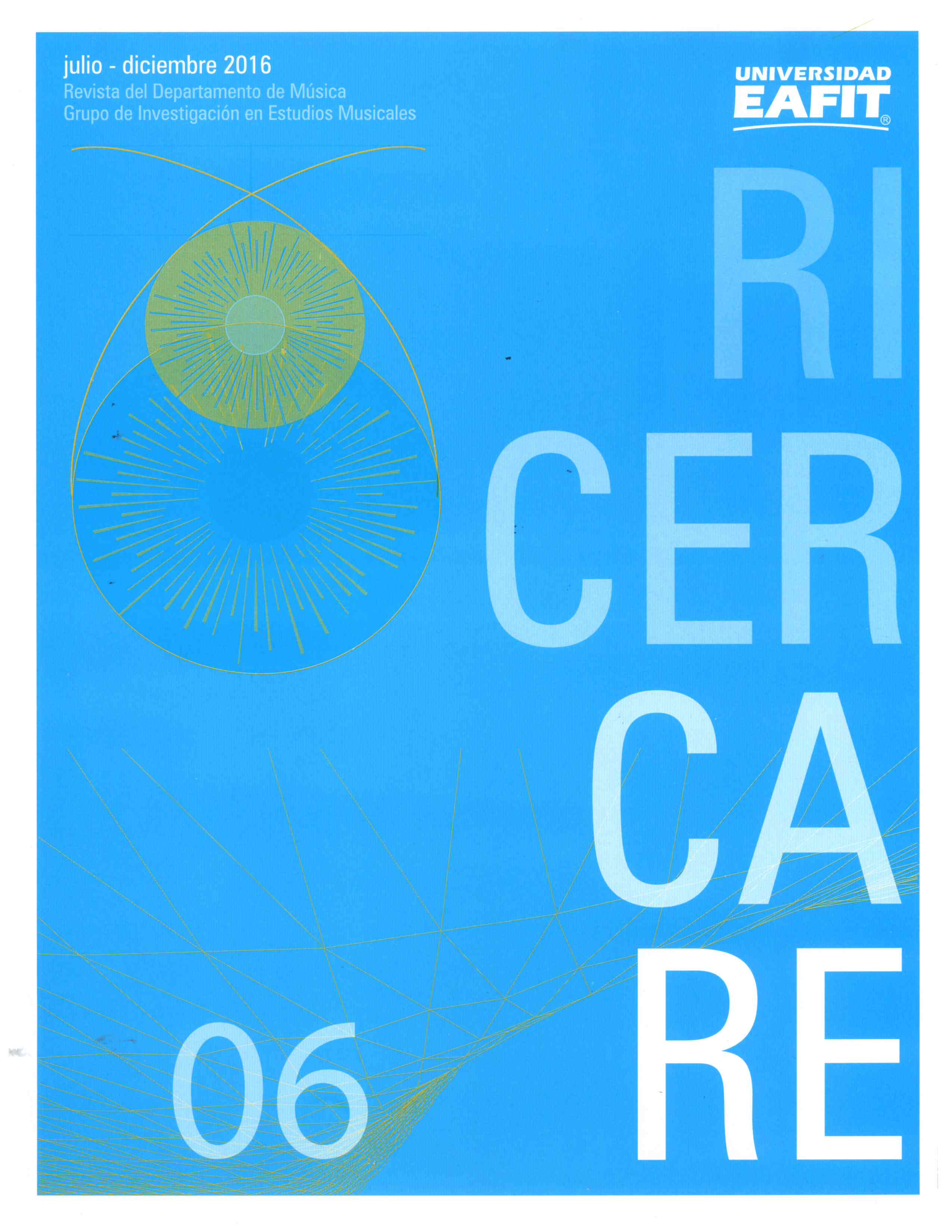Keyboard harmony or partimento as a methodological strategy for teaching improvisation and learning musical language
Main Article Content
Keywords
partimento, improvisation, keyboard harmony, thorough bass
Abstract
The intention behind this article is to present and provide a methodological alternative for teaching musical improvisation within an academic context in which Art Music is transmitted. This pedagogical approach covers the basics of partimento and thorough bass realization, passing through Romanticism until getting to the rudiments and fundamentals of jazz language, these latest serving as an effective tool for building a connecting bridge between musical traditions (european Art Music and Jazz) for the comprehension of French Impressionism of the late 19th century. Behind all this pedagogical approach to keyboard-harmony teaching is the interest in installing the practice of improvisation as an essential element for the classical musician’s formation and, should it be not an achievable goal in the short term, stating the benefits which imply an accelerated appropriation of musical language.
Downloads
Download data is not yet available.
References
Chappuis, D. (2014-2015). Clase de Armonía Práctica de Tercer Año. Maestría de Teoría Musical. Ginebra, Suiza.Festival de Musique Improvisée de Lausanne. (s.f.). fmil.org. Recuperado el 4 de Abril de 2016, de http://www.fmil.org/festival.php?fmil=festival
Lutz, R. (2010). The Playing of Partimento: COMPREHENSIVE TRAINING FOR THE COMPOSING AND IMPROVISING INTERPRETER. En R. G. Thomas Christensen, Partimento and Continuo Playing in Theory and in Practice. Leuven University Press.
Marco, B. d. (2014). Conflicto entre Teoría y Práctica en la realidad del Músico Instrumentista”.Ginebra: Haute École de Musique de Genève.
Montagnier, J.-P. C. (2009). Principes de Composition de Nicolas Bernier. Langres: Éditions Dominique Guéniot.Paisiello, G. (s.f.). imslp.org. Recuperado el 19 de Septiembre de 2016, de http://imslp.org/wiki/Regole_musicali_per_i_principianti_di_cembalo_(Fenaroli,_Fedele)
Sanguinetti, G. (2007). The Realization of Partimento. Journal of Music Theory, 51- 83.
Sanguinetti, G. (2012). The Art of Partimento. New York: Oxford University Press.
Imágenes referenciadasChappuis, D. (2014-2015). Clase de Armonía Práctica de Tercer Año. Maestría de Teoría Musical. Ginebra, Suiza.
Montagnier, J.-P. C. (2009). Principes de Composition de Nicolas Bernier. Langres: Éditions Dominique Guéniot.Paisiello, G. (s.f.). imslp.org. Recuperado el 19 de Septiembre de 2016, de http://imslp.org/wiki/Regole_musicali_per_i_principianti_di_cembalo_(Fenaroli,_Fedele)
Lutz, R. (2010). The Playing of Partimento: COMPREHENSIVE TRAINING FOR THE COMPOSING AND IMPROVISING INTERPRETER. En R. G. Thomas Christensen, Partimento and Continuo Playing in Theory and in Practice. Leuven University Press.
Marco, B. d. (2014). Conflicto entre Teoría y Práctica en la realidad del Músico Instrumentista”.Ginebra: Haute École de Musique de Genève.
Montagnier, J.-P. C. (2009). Principes de Composition de Nicolas Bernier. Langres: Éditions Dominique Guéniot.Paisiello, G. (s.f.). imslp.org. Recuperado el 19 de Septiembre de 2016, de http://imslp.org/wiki/Regole_musicali_per_i_principianti_di_cembalo_(Fenaroli,_Fedele)
Sanguinetti, G. (2007). The Realization of Partimento. Journal of Music Theory, 51- 83.
Sanguinetti, G. (2012). The Art of Partimento. New York: Oxford University Press.
Imágenes referenciadasChappuis, D. (2014-2015). Clase de Armonía Práctica de Tercer Año. Maestría de Teoría Musical. Ginebra, Suiza.
Montagnier, J.-P. C. (2009). Principes de Composition de Nicolas Bernier. Langres: Éditions Dominique Guéniot.Paisiello, G. (s.f.). imslp.org. Recuperado el 19 de Septiembre de 2016, de http://imslp.org/wiki/Regole_musicali_per_i_principianti_di_cembalo_(Fenaroli,_Fedele)

